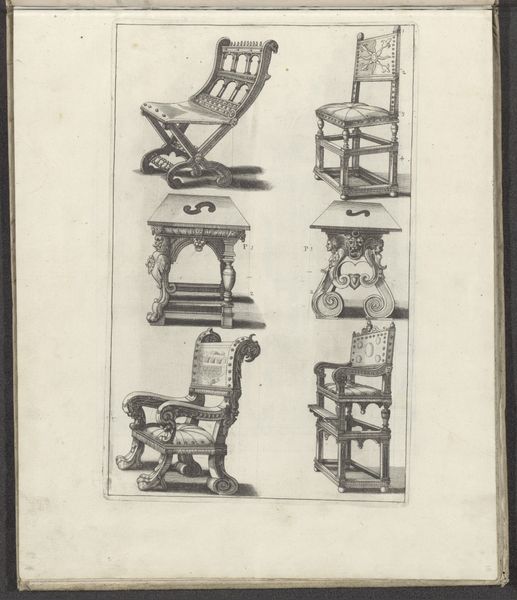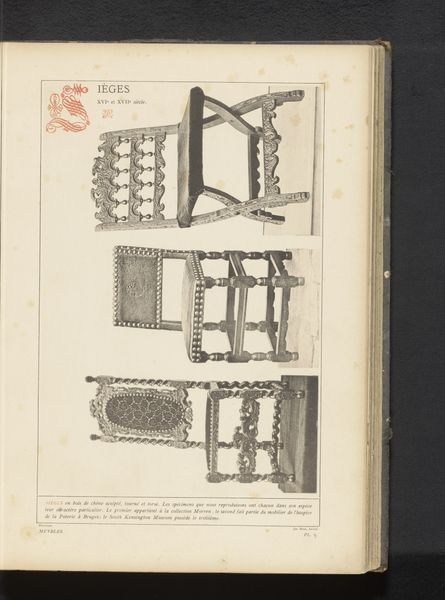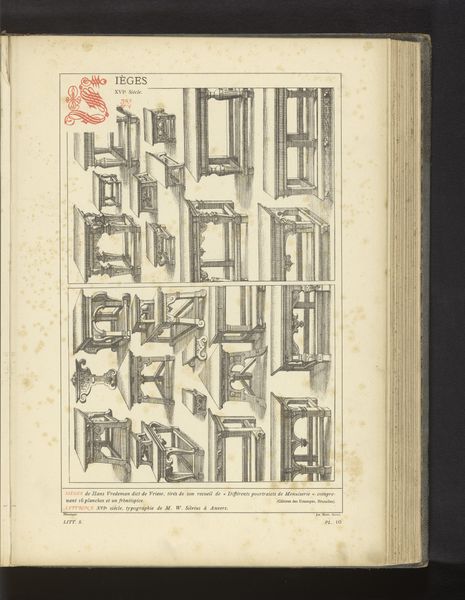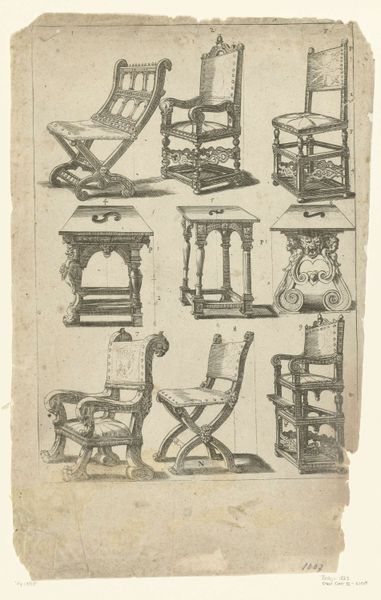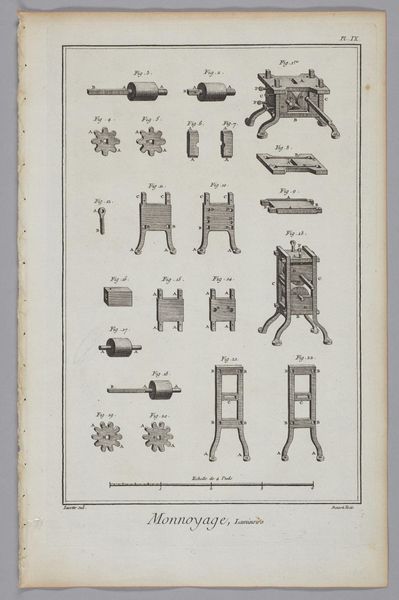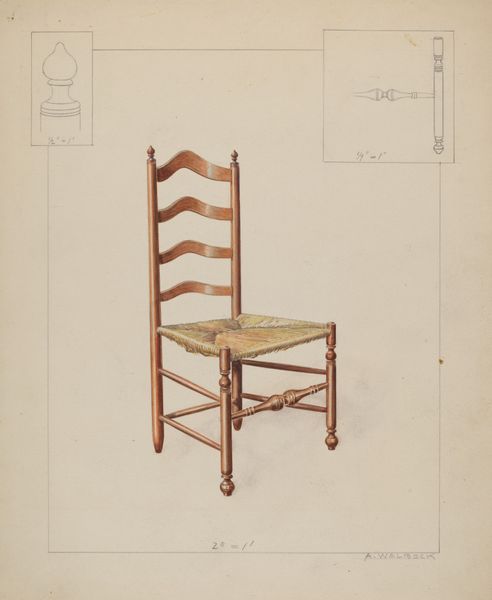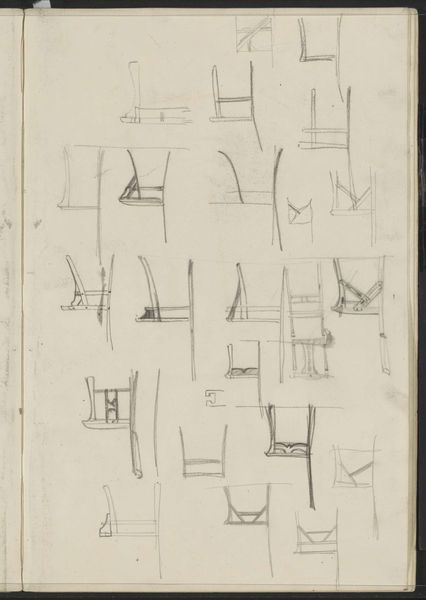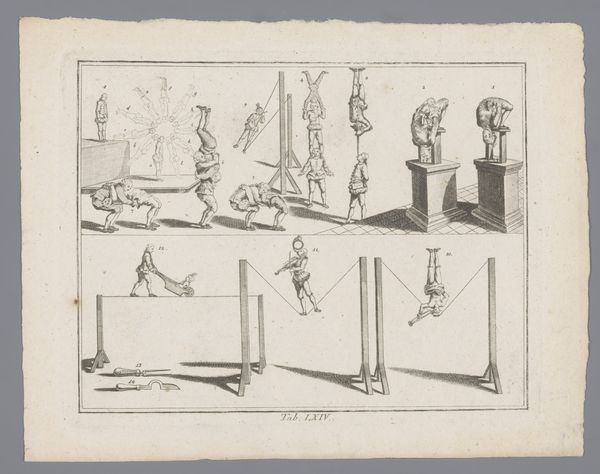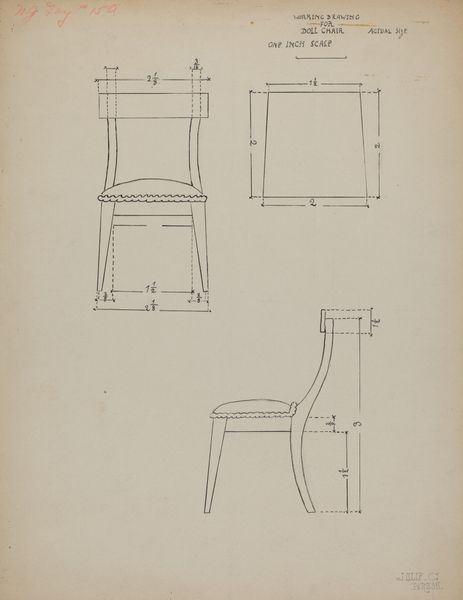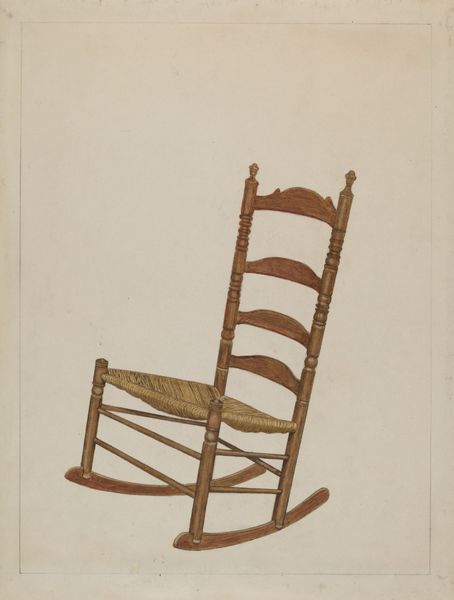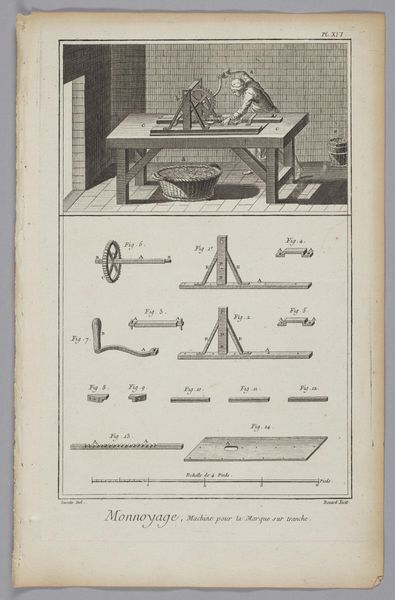
Reproductie van een prent met ontwerpen voor zes stoelen en drie krukken door Crispijn van de Passe (II) before 1881
0:00
0:00
drawing, print, engraving, architecture
#
drawing
#
aged paper
#
homemade paper
# print
#
sketch book
#
hand drawn type
#
form
#
personal sketchbook
#
pen-ink sketch
#
line
#
pen work
#
sketchbook drawing
#
storyboard and sketchbook work
#
northern-renaissance
#
decorative-art
#
sketchbook art
#
engraving
#
architecture
Dimensions: height 341 mm, width 233 mm
Copyright: Rijks Museum: Open Domain
Curator: This engaging print is a reproduction of a work by Crispijn van de Passe II, showcasing various chair and stool designs. Editor: My initial thought is of practical elegance; each design balances functionality with a touch of ornate flair, giving us a snapshot of design priorities. Curator: Van de Passe was prolific in printmaking, influencing the visual culture through the distribution of designs like these. Here we see engraving techniques used to offer a visual lexicon of furniture during that period, probably for use by other craftspeople. Editor: Indeed, such designs not only offered patterns but also reinforced the status and aspiration associated with owning stylish furniture. We must remember that these aren’t just chairs; they’re statements about the sitter and their household. What can these pieces tell us about how society and power were organised in Northern Renaissance communities? Curator: Intriguing. One sees the familiar visual language of status – certain curves and forms implying luxury and access only granted to those occupying the right spaces in society. Beyond their practical use, one wonders if these forms, passed around and reproduced, contributed to how period culture imagined or envisioned ideal sitting, relaxing or commanding space, symbolically, too. Editor: Exactly, the symbol-laden aesthetic isn’t accidental. Notice how even elements such as legs of tables feature decorations and ornaments, that tells the cultural story of the values that underpin everyday objects. One is left wondering about their public perception. Were such items seen more as practical tools or social artifacts? Curator: Considering their intricacy, perhaps something of both. Now I see not merely the furniture blueprints, but echoes of cultural dreams rendered through tangible shapes. Editor: That’s an insightful conclusion. These designs act as a potent time capsule; capturing tastes and conveying status considerations prevalent within their era.
Comments
No comments
Be the first to comment and join the conversation on the ultimate creative platform.
